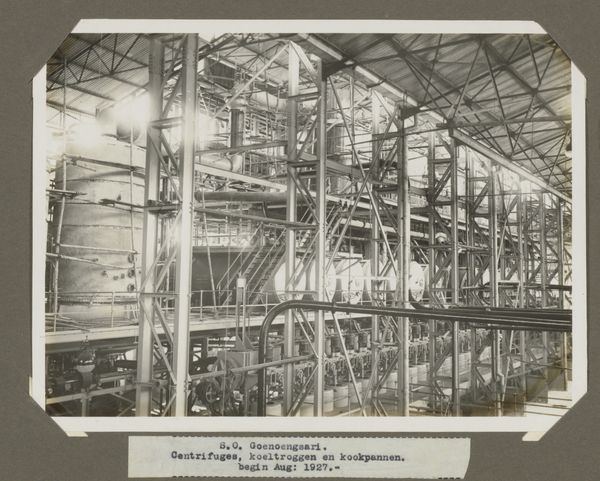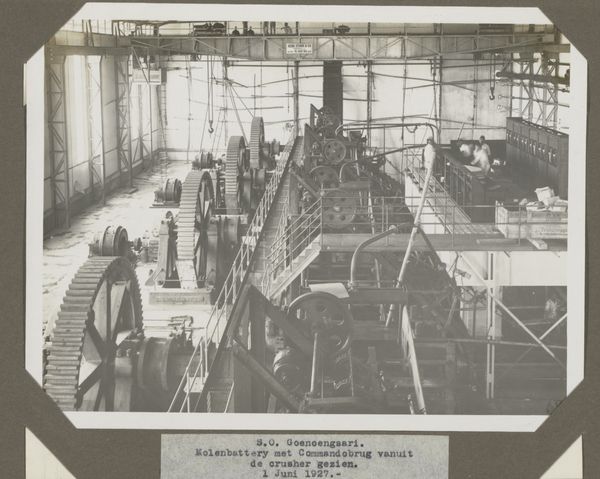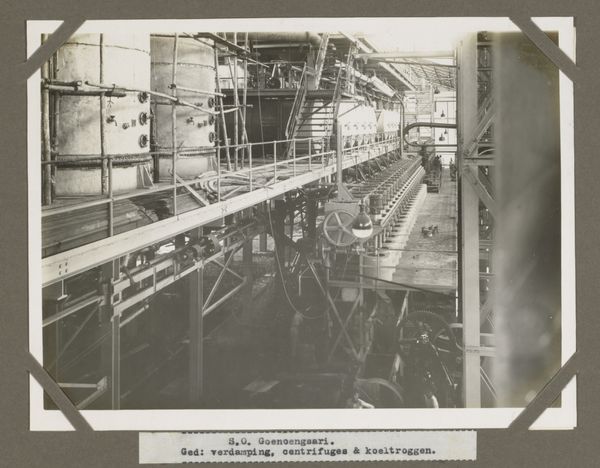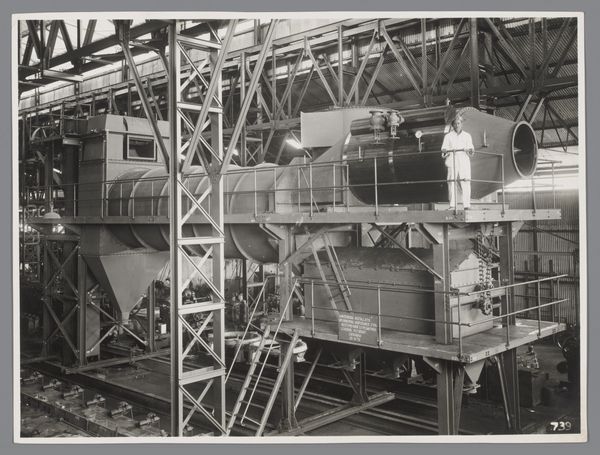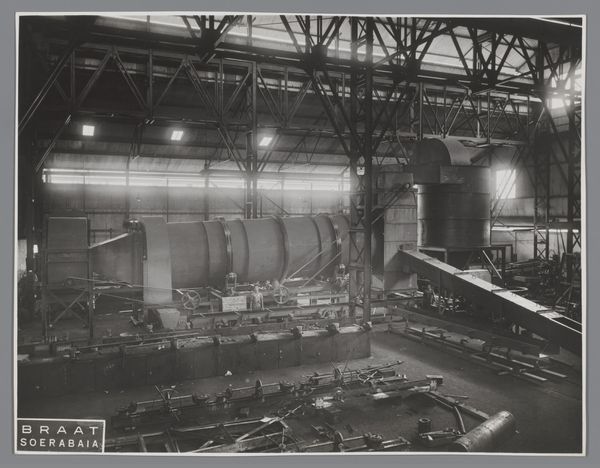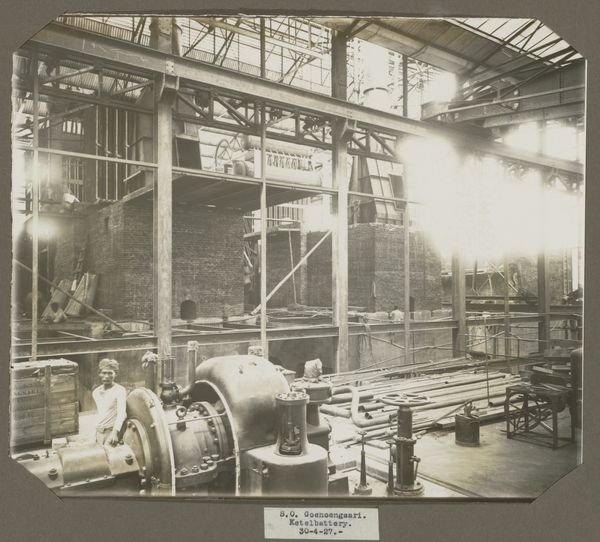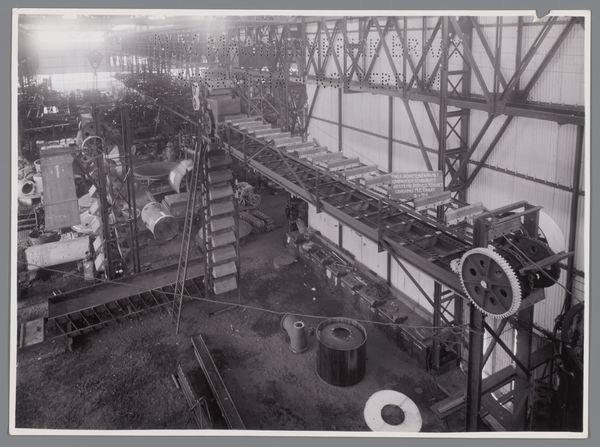
print, photography
# print
#
archive photography
#
photography
#
geometric
#
geometric-abstraction
#
modernism
#
realism
Dimensions: height 167 mm, width 229 mm
Copyright: Rijks Museum: Open Domain
Editor: Here we have a fascinating photograph entitled "S.O. Goenoengsari. Rietcarrier en Crusher. 20-8-27." from circa 1927-1928, captured by Isken. It looks like a print, potentially archival. The sheer scale and angularity of the machinery is striking. What do you see in this piece from a historical context? Curator: What I immediately notice is the depiction of industrial progress in the Dutch East Indies, now Indonesia. The photograph serves as a document of the colonial sugar industry. Consider how photography, often commissioned, functioned as a tool to promote a narrative of modernization and order under colonial rule. The technical precision and stark realism glorify the mechanization of sugar production. Editor: So the photograph itself is part of a colonial project? It’s interesting how a seemingly straightforward depiction of machinery could be interpreted that way. Curator: Exactly. Think about who would have commissioned such an image and what purpose it served. Was it meant to reassure investors, impress potential collaborators, or demonstrate the supposed benefits of colonial infrastructure to the local population? And how does the composition, the sharp focus on the machinery rather than the workers, reinforce this power dynamic? Editor: I see what you mean. By focusing on the machines, it dehumanizes the labor involved. Are there other aspects beyond colonialism that strike you? Curator: Definitely. We can view it as a visual document of early industrialization in Southeast Asia, its impact on landscape, labor, and the emergence of new class structures in that region. It shows the social and economic changes spurred by such industrial advancements. Understanding this interplay of photography, colonial ambition, and industrial advancement is crucial. Editor: I hadn’t considered it in terms of visual propaganda before. This makes me consider the photographer's intentions more deeply, as well as how images like this shaped perceptions then and even now. Curator: Precisely. It’s a valuable reminder that art, especially something as seemingly objective as photography, is never truly neutral; it always exists within a social and political framework.
Comments
No comments
Be the first to comment and join the conversation on the ultimate creative platform.
